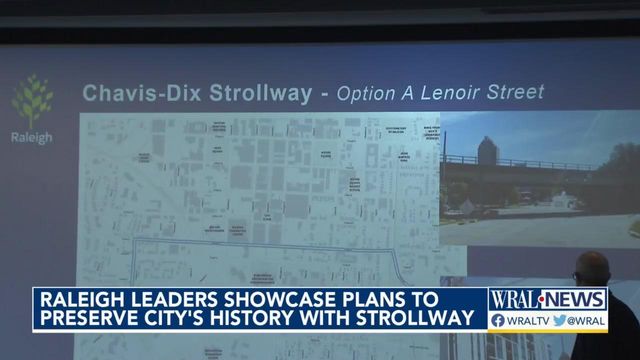City of Raleigh hears from residents about project linking historical sites
It would take residents on a journey past landmarks and monuments and connect two big parks together.
Posted — UpdatedFrom Chavis Park, you can see tall buildings rising above the trees. Growth has changed Raleigh.
Wanda Hunter was raised around downtown Raleigh's southside.
She’s seen a lot of new people move in. In some cases, they pushed out those who remember the history here.
“You see so many of your memories being torn away,” said Hunter. “The airplane that used to be here, that can tell you about the train that used to be here at Chavis Park.”
Residents could look at plans to preserve some of that history at Saturday's public meeting.
The South Park Heritage Walk and Chavis-Dix Strollway would connect Chavis and Dix park. It would also walk residents past historical landmarks in the area.
Ken Bowers is deputy director of planning development with the city.
“Exhibits, monuments, even multi-module features where you may be able to use your smartphone to hear something about the history of the area,” said Bowers. “The idea has been kicking around since 2016.”
The proposals will start firming up now that money is available to get moving.
“Using projects like this to memorialize [and] educate about the heritage and history of the area is so critical," said Bowers. "Because you want to do that while the evidence of it is still in existence.”
Hunter had questions about safety and how the project will look.
She is all for preserving the history of the place where she was raised, but wishes it could have come before so much had already changed.
“Why did it take so long?" asked Hunter. "Why did it have to be after gentrification.”
Historic areas that would be highlighted include Chavis Park, Shaw University and places where prominent African Americans lived.
More community engagement events are planned.
• Credits
Copyright 2024 by Capitol Broadcasting Company. All rights reserved. This material may not be published, broadcast, rewritten or redistributed.






